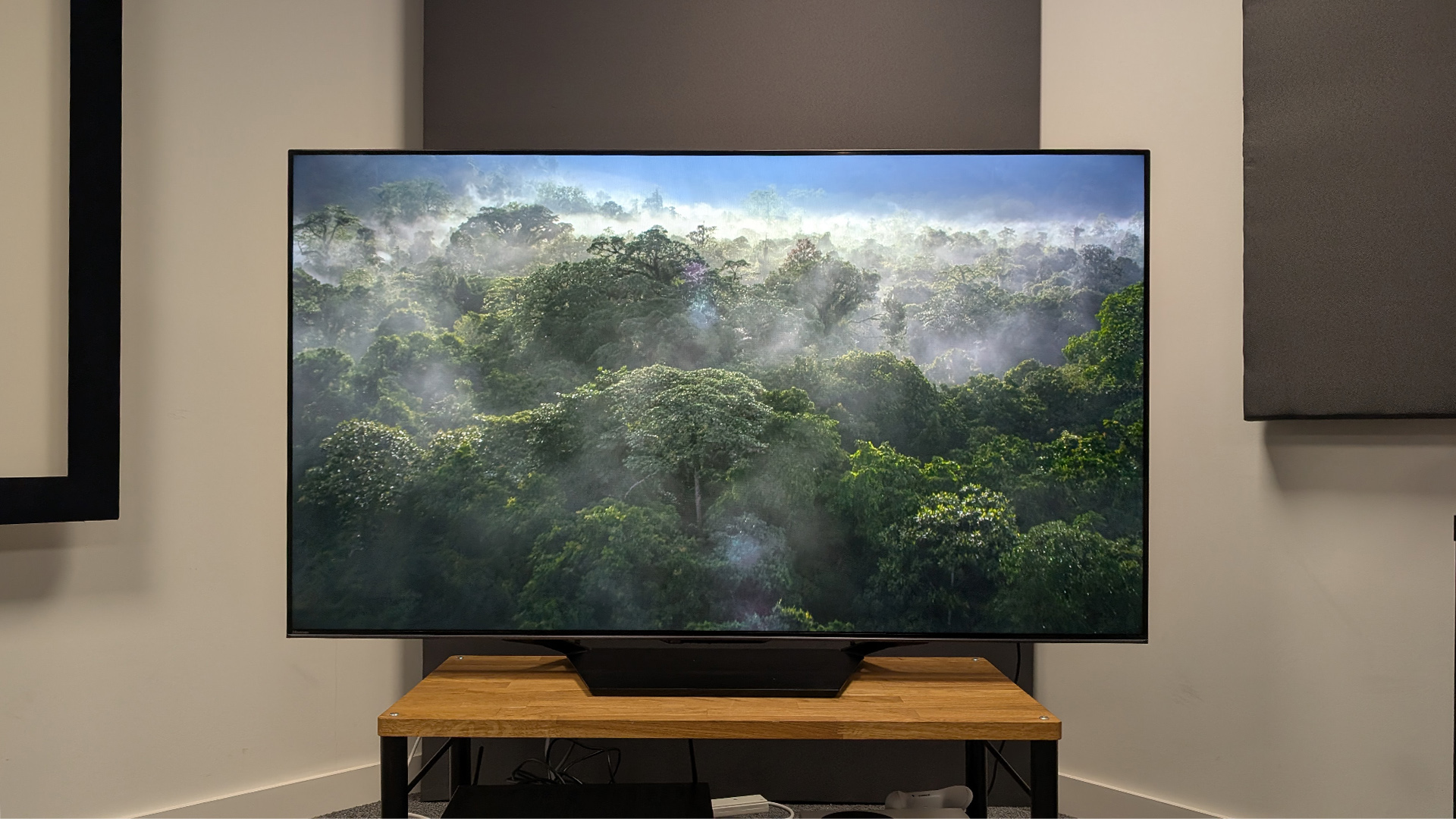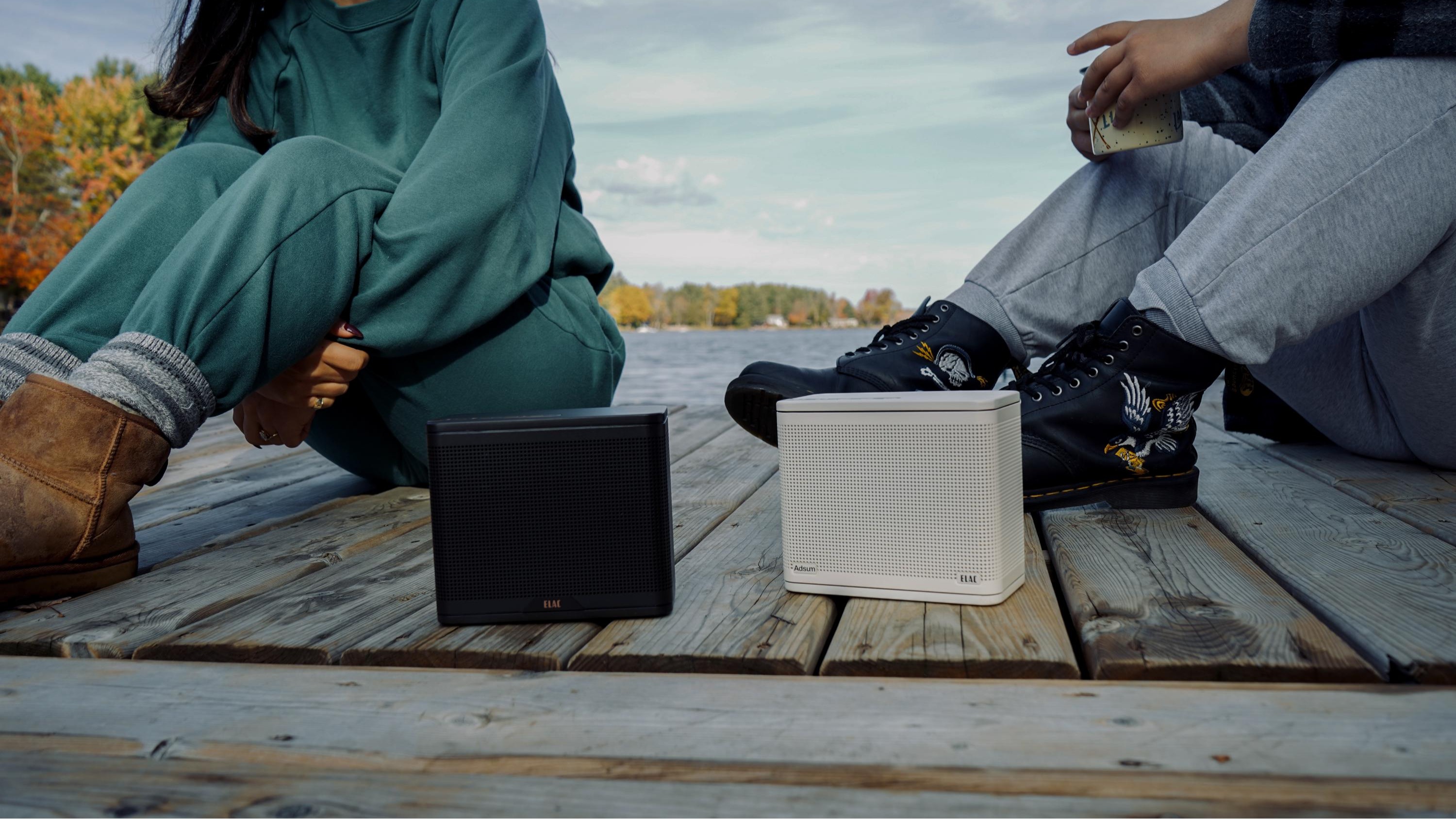What Hi-Fi? Verdict
Competitive pricing, solid specifications and good picture quality make the Hisense U7N a solid, but not perfect, option for most people
Pros
- +
Solid picture quality
- +
Good value
- +
Competitive gaming features
Cons
- -
Upscaling isn’t best in class
- -
Some backlight blooming
- -
Loses detail in very bright scenes
Why you can trust What Hi-Fi?
The Hisense U7N is the middle Mini LED option in the Chinese TV maker’s current lineup and it aims to pull the exact same trick that put the firm on the map in the early 2010s. Specifically, offering buyers a portfolio of features and specifications you’d traditionally only see on more expensive TVs.
While this formula has since been replicated by arch-rival TCL, it still makes the U7N a fantastic value, enticing proposition for people that can’t afford an OLED. In most instances the U7N is a fantastic performer that will meet the needs of any buyer on a budget. But for serious movie fans there are foibles and minor flies in the ointment that stop it achieving perfection, even at its aggressive price.
Price
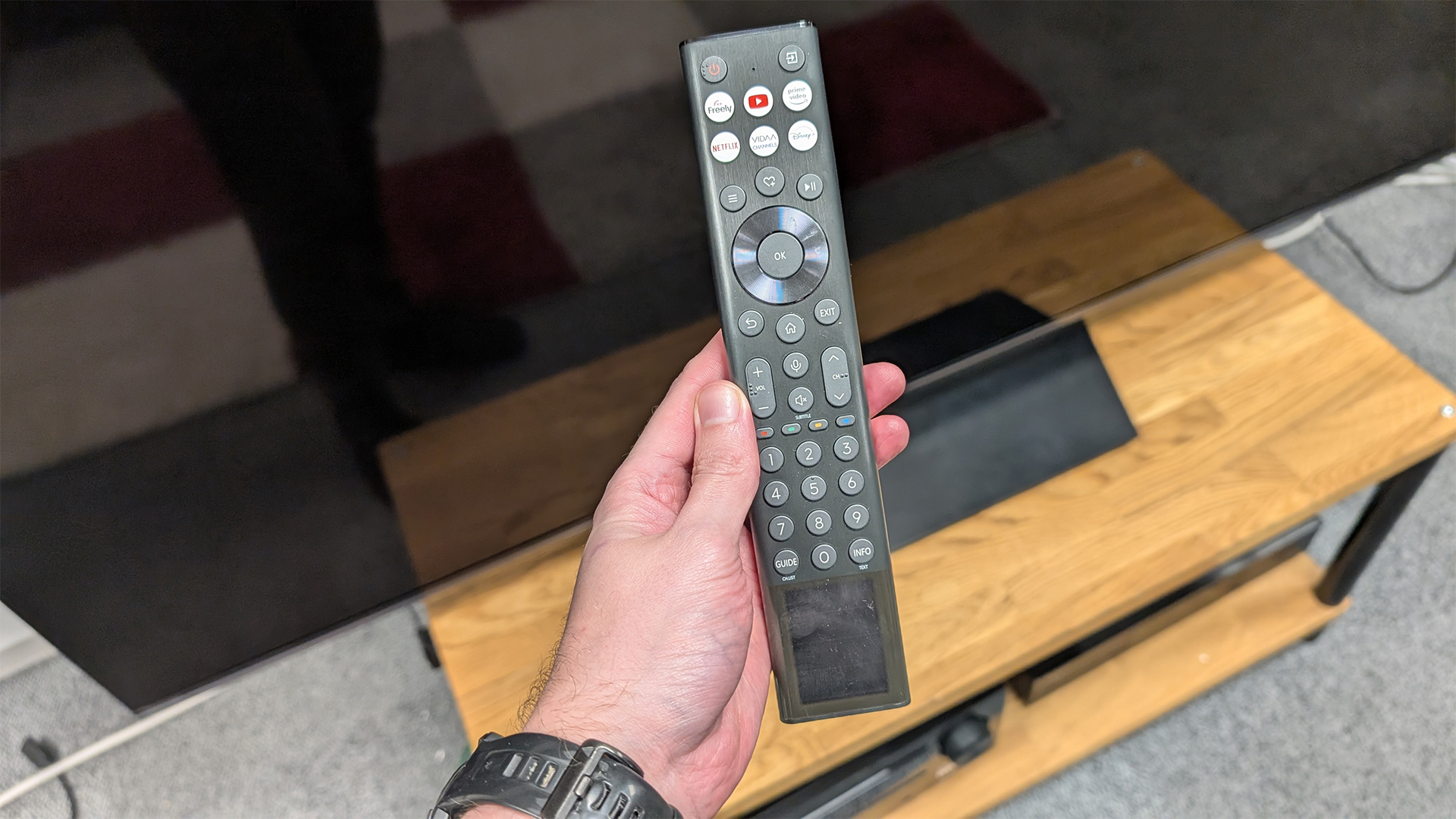
The U7N is available in 55, 65, 75, 85 and 100-inch sizes. The 65-inch Hisense U7N we’re reviewing launched in April costing £1599 / $999 / AU$2299. But its price has dropped significantly since and it’s now available for well under £1000 / $1000 / AU$2000.
The price means the U7N sits firmly in the upper end of the ‘affordable’ end of the Mini LED market, being well below its flagship-level big brother, the U8N.
That puts it directly in competition with some pretty big names. Chief of which is the new Amazon Fire TV Omni Mini LED, which is currently priced £949 / $959.
Design
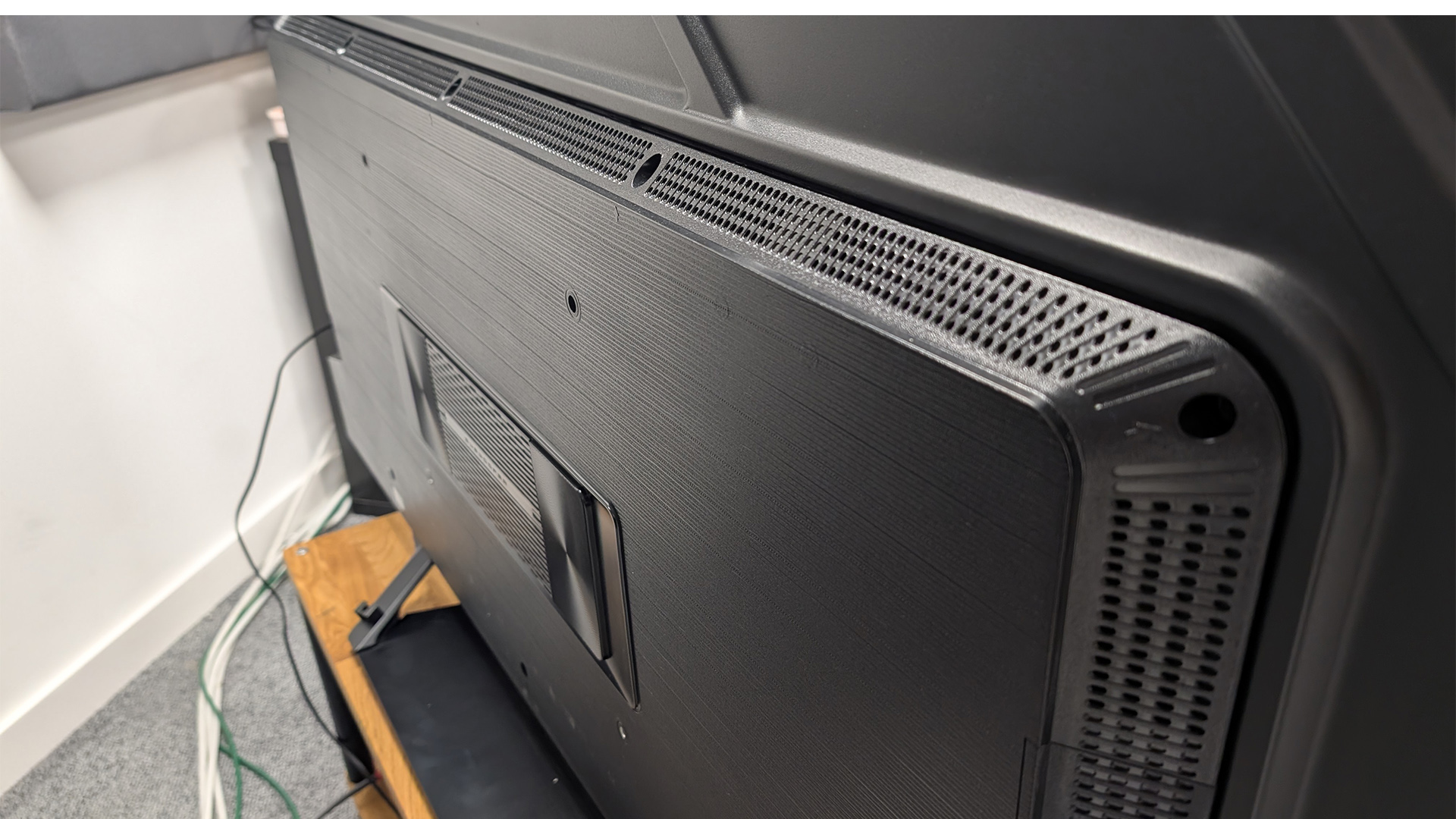
The U7N has a very different, and in some ways more striking design than the U8N, thanks largely to the slightly atypical stand it comes with.
The plastic pedestal stand takes up a pleasingly small footprint and is easy to set up, being attached to the back of the TV via four included screws. But the feet’s forward angle, that sees them extend from the back of the pedestal up onto the TV’s rear, is a two edged sword.
The latest hi-fi, home cinema and tech news, reviews, buying advice and deals, direct to your inbox.

Screen size 65 inches (also available in 55, 75, 85 and 100 inches)
Type QLED
Backlight Mini LED
Resolution 4K
HDR formats HLG, HDR10, HDR10+, Dolby Vision
Operating system VIDAA (UK and Australia), Google TV (US)
HDMI inputs x 4 (2 x 48Gbps HDMI 2.1)
Gaming features 4K/120Hz, 4K/144Hz, VRR, ALLM, Dolby Vision gaming
ARC/eARC eARC
Optical output? Yes
Dimensions (hwd, without stand) 72 x 123 x 7.9cm
On the positive side, it means the flat pedestal on the front is completely unobstructed, so you can easily plonk a soundbar below the TV. The stand height also leaves enough room for a Sonos Beam Gen 2 to be placed without any of the display being blocked.
But the angled metal feet arrangement means that, though generally stable, it is easy to tip if knocked the wrong way. One of our reviewers nearly tipped it over after accidentally bumping into the U7N’s top left corner while swapping out some cables. If you have pets or small children, be warned, the U7N is easier to topple than you’d expect.
The pedestal also doesn’t have a swivel mechanism, so you’ll want to keep this in mind when adjusting the TV’s angle, or moving it temporarily to access its side facing connections.
If you decide to mount it, it also supports all standard VESA 400x300 options, but be warned the ethernet and USB A and optical inputs are back facing, which means they’re not easily accessible if you place the set flush to a wall.
Outside of that it’s a perfectly utilitarian product, featuring small bezels and the same solar charging remote that comes with the U8N. Though the charge plate makes the remote undeniably a little chunky, from a functionality standpoint it is fantastic, featuring a backlight and shortcuts to all the services you’ll use day-to-day, arranged in an intuitive layout.
Features
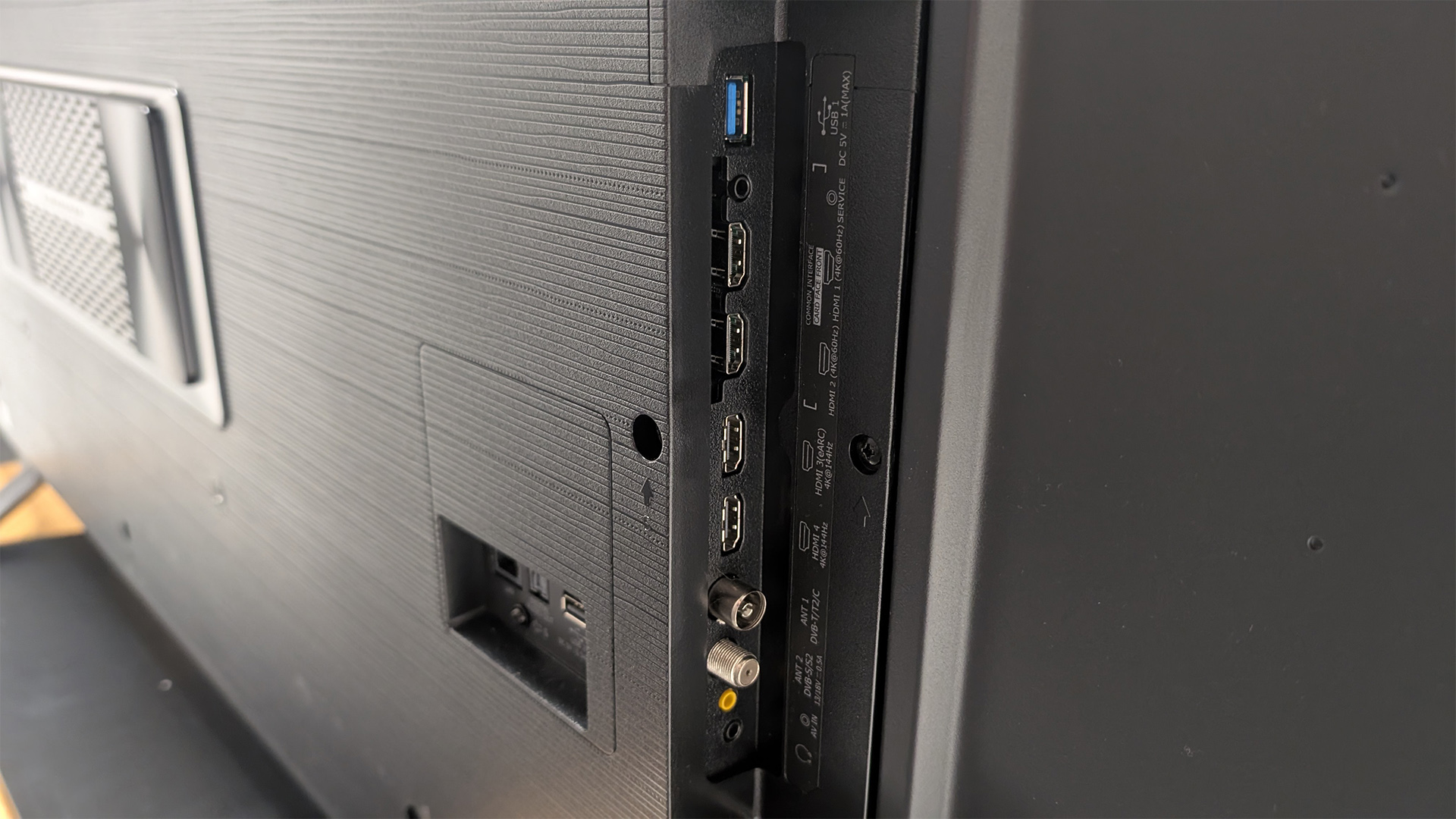
The U7N’s headline features are fairly similar to its big brother, the U8N at first glance.The U7N runs using a customised Hi-View Engine Pro chipset. This is a heavily customised version of the quad-core MediaTek MT9618 Pentonic 700 seen on other TVs. The tweaks and additions made aim to help improve the TV’s light control and generally boost picture quality.
The downside of the chipset is that, like all TVs with it or the MediaTek silicon it's built on, the U7N only supports two full-speed 48Gbps, HDMI 2.1 inputs, one of which doubles as the eARC port. If you have a Dolby Atmos soundbar and more than one current-gen gaming device, you will have to contend with some cable swapping or accept limiting the capabilities of the devices plugged into the two remaining HDMI 2.0 sockets.
Gaming features and HDR support are otherwise solid, especially for a TV in the U7N’s price bracket. The TV can run 4K games at up to 144Hz (though consoles are currently limited to 120Hz), and it supports ALLM and VRR. This means it’s more than capable of running a current generation games console or powerful gaming PC at full speed. For Xbox gamers, the inclusion of Dolby Vision Gaming will also be a welcome touch.
HDR support continues with Dolby Vision, HDR10, HLG and HDR10+ all being included. The offshoot Dolby Vision IQ and HDR10+ Adaptive, which both aim to help let the TV intelligently respond and optimise its settings based on the ambient light conditions are also present. For Disney+ subscribers, the IMAX Enhanced certification will also be welcome and rounds out the U7N’s excellent HDR offering.
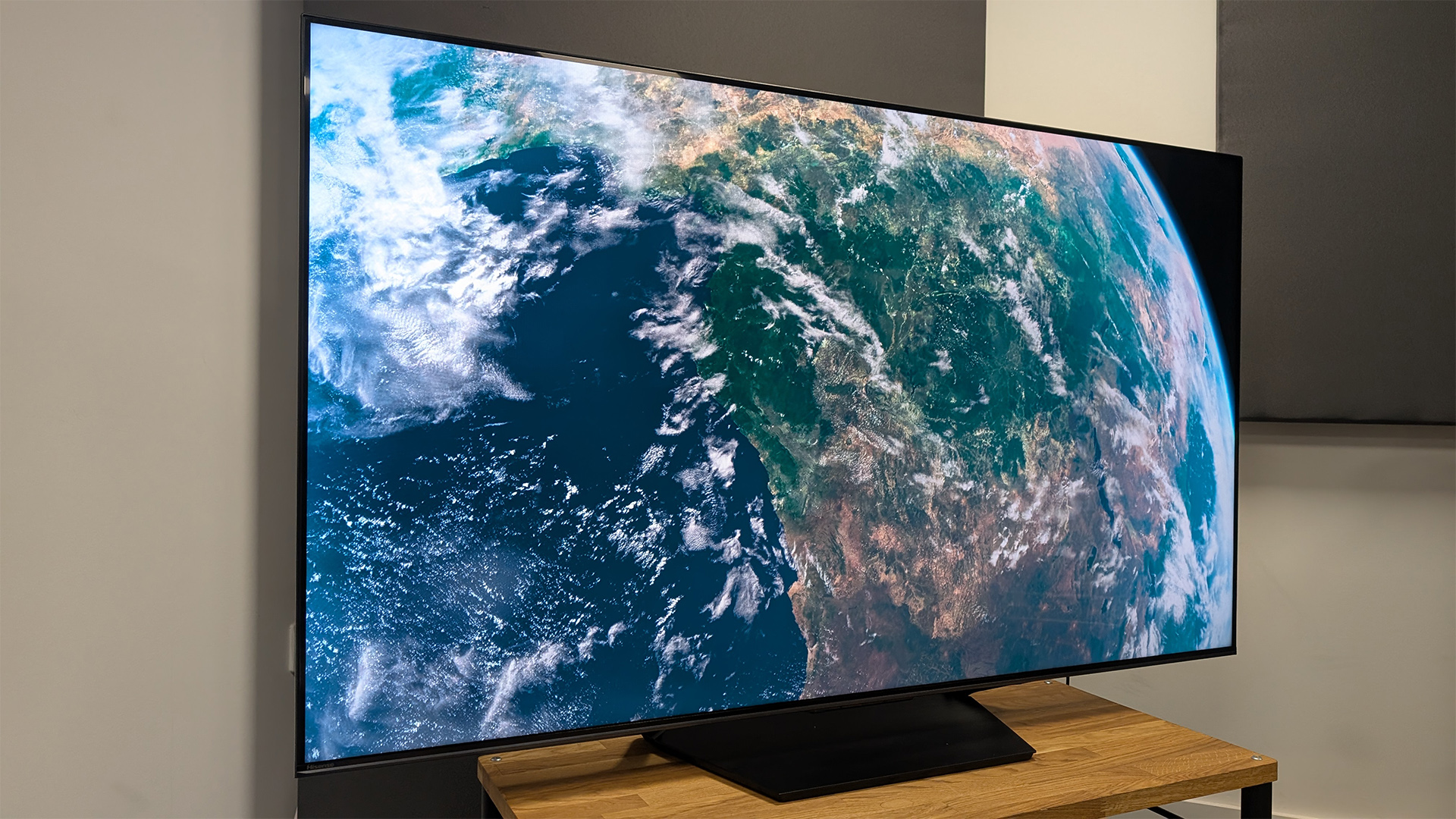
In the US, the U7N runs on Google TV. In the UK and on the model we’re reviewing, it uses VIDAA. App support is solid as a result. Running through our standard suite of checks, common streaming services, including Netflix, Disney+ and Prime Video, are available and run in 4K with Dolby Vision or HDR10+ as required. Freely, which collects pretty much all of the UK’s major local streaming and catchup services, is also included. The only missing items relate to gaming, with Steamlink and GeForce Now not currently being supported on VIDAA.
So what’s actually different between the U7N and the more expensive U8N? It comes down to the specific display technology used. Though the U7N uses a similar-sounding 4K VA-panel with Quantum Dot technology and a Mini LED backlight, there are differences between the two. The 65-inch U7N’s backlight is split into 384 dimming zones and the screen has a peak brightness of 1500 nits. That’s a lot lower than the U8N, which features 1600 dimming zones and can produce a claimed 3000 nits of peak brightness.
This is a key difference between the U7N and most other moderately more expensive Mini LED TVs. It’s also a big deal as dimming zones are a key factor that, when utilised correctly, can boost key metrics including contrast.
Picture
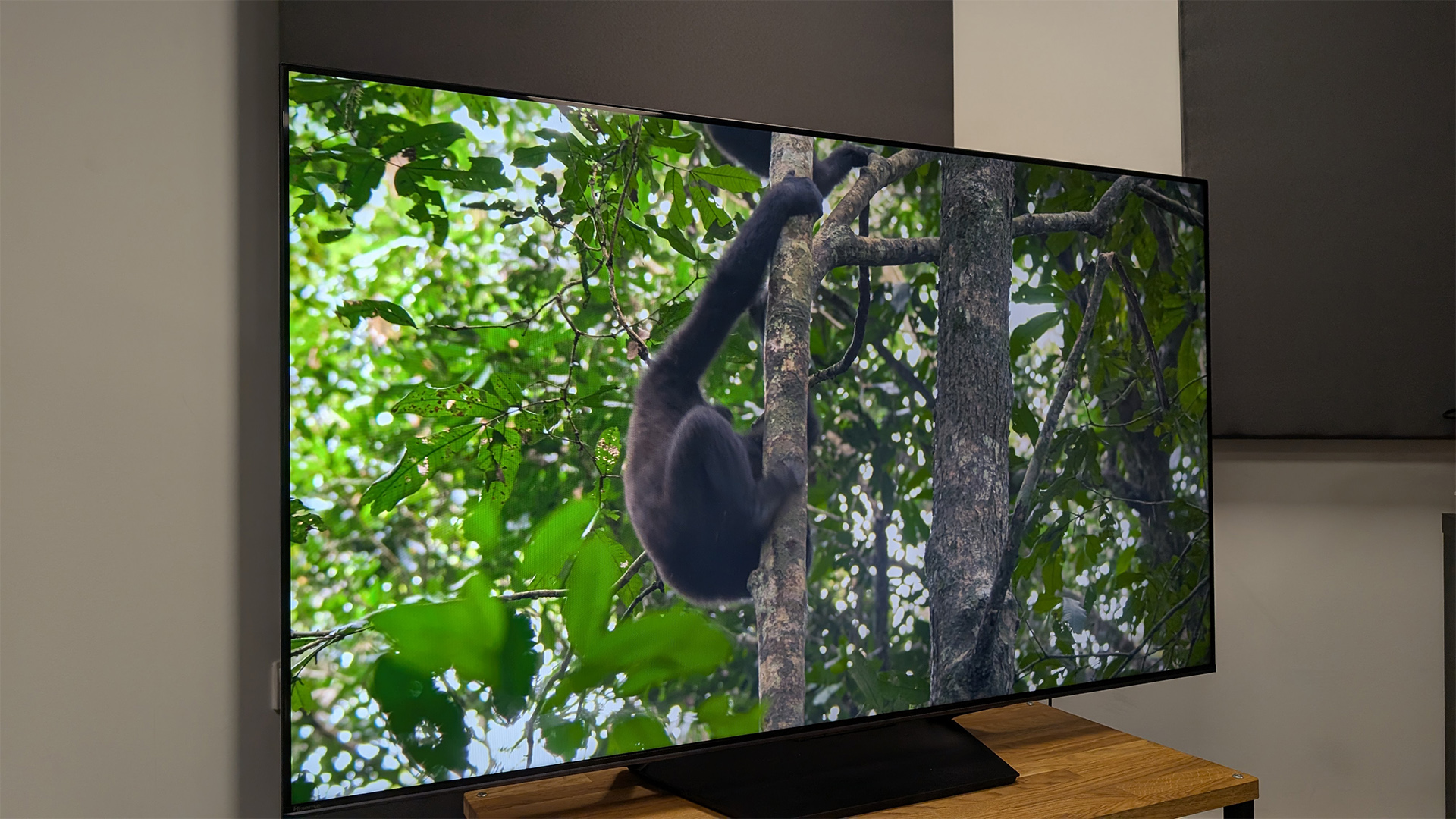
So how good a picture can the Hisense U7N deliver? Here the answer is very good considering the price, in most instances – though you will need to wrangle with its slightly obtuse settings to get the most out of it.
Out of the box our experience with the U7N is very similar to other Mini LED sets we’ve tested this year. The Standard mode is too heavy-handed. Playing our 4K Blu-ray of Top Gun: Maverick, the Standard picture mode’s colours are overbaked, with Maverick’s skin tones looking distorted. Movements such as jet planes launching off an aircraft carrier are over-smoothed and look artificial. Peak brightness elements of the picture look flat and lose detail as the TV cranks contrast in a bid to make the picture pop.
Switching to Filmmaker mode drastically improves things, but the TV still requires some minor finessing. Watching Maverick come out of his trailer, blacks have a distinctly grey look, even by Mini LED standards, and bright sections of the picture feel subdued as the contrast isn’t quite right.
After a series of experiments, we settle on Local Dimming in High, Adaptive Contrast in High, motion processing in Film and the Colour profile set to Warm 2. Interestingly, as we experienced on the U8N, the colour profile choice is largely driven by the fact that Warm 2 offers much deeper blacks than Warm 1, which makes everything look peculiarly grey.
Once done, Maverick's skin tones look remarkably more realistic, movements are nicely natural and the U7N’s overall strengths start to shine through.
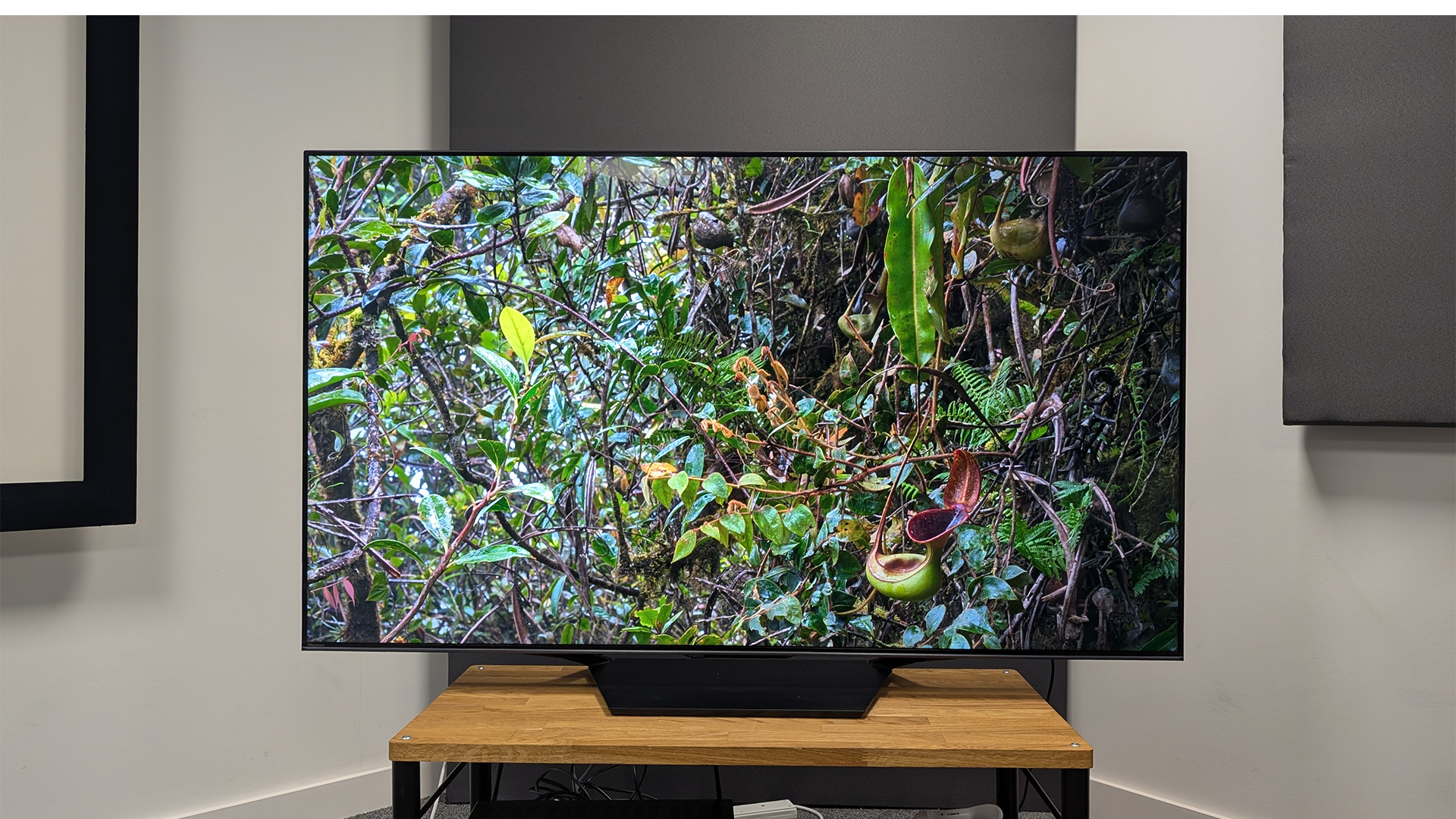
Moving to our Blade Runner 2049 4K Blu-ray, results are solid. Though there’s noticeable blooming around the explanatory text overlaying the intro’s otherwise black ground, the U7N throws up a wonderfully three-dimensional image as Officer K flies into a dusty protein farm.
As K enters the farmhouse some shadow detail is lost in the absolute darkest parts of the picture as the set raises the contrast, but the TV’s solid control over its dimming zones otherwise shines. A pot on the stove picks up the stray reflections of a window in the background of the scene, as well as the primary light source next to it, separating it from the background and giving the film a nicely three-dimensional feel.
The same is true of Dave Bautista’s character, Sapper Morton, with the picture retaining oodles of detail from the darkest to lightest sections of his face. Many of the sets we test at this price crush detail in at least one end of the brightness spectrum. Colours are nicely warm, with the reds in Morton’s and K’s cheeks remaining even in shadows, giving the film a nicely authentic feel.
Moving to our tried, and terrifying, It 4K Blu-ray, results remain uniform, and the U7N continues to deliver great results considering its price. The basement oozes menace as Georgie descends into it, and skin tones and colours in general have a nice pop without ever entering overcooked territory.
However, as evil clown (and the source of an entire generation’s nightmares) Pennywise peeks out of the sewer, his eyes are missing the hypnotic, menacing sparkle they hold on competing Mini LED sets, including its U8N sibling and the TCL C855K (review coming soon).
Moving to Pan, our peak brightness stress test due to its 4000 nits mastering, we notice the issue repeat. As a flying pirate ship races through the sky, the burning centre of the sun largely appears as flat white and misses the red and orange hues that are clearly visible on the C855K we have set up next to it.
We also notice a loss of contrast and warmth in the brightest part of the picture as we move to our Dune: Part 2 4K Blu-ray. The picture isn’t bad, but the sparkling desert appears slightly flat and is missing the sepia tones that bring the image to life. The skyline is also missing subtle detail, again indicating a loss of colour volume in incredibly bright scenes.
Thankfully, the results are at least uniform, with the TV remaining consistent with its handling of the picture, so issues we have with light scenes aren’t distracting when the TV is viewed in isolation. There are no rapid fluctuations in contrast or brightness levels as we sometimes experience on Mini LEDs with poor dimming zone control.
In most instances, it deals well with SDR content too. Running an episode of Ru Paul’s Drag Race on iPlayer, the queens’ colourful costumes pop and the set’s motion handling does justice to their lip-sync battles. The same remains true when we switch to a game of Premier League football – the players look sharp and their movements flow naturally.
But the TV’s upscaling does struggle with more difficult content. Moving to our final test, the True Grit SDR Blu-ray, the Hisense delivers a good, but far from best-in-class performance. We use True Grit to test upscaling and a TV’s handling of SDR as it’s a notoriously tricky movie, featuring an intentionally grainy, spaghetti western quality and demanding scenes that rapidly jump from dark to light.
The opening scene offers decent black levels, with the stray candle-lit lanterns in the night holding a pleasing warmth. But details are lost in the darkest part of the picture and artefacts creep into the falling snow. Moving to the second scene, the image is more than watchable, but characters look slightly flat, despite having pleasingly warm, realistic skin tones. The entire image just looks ever-so-slightly too fuzzy for our liking.
Sound
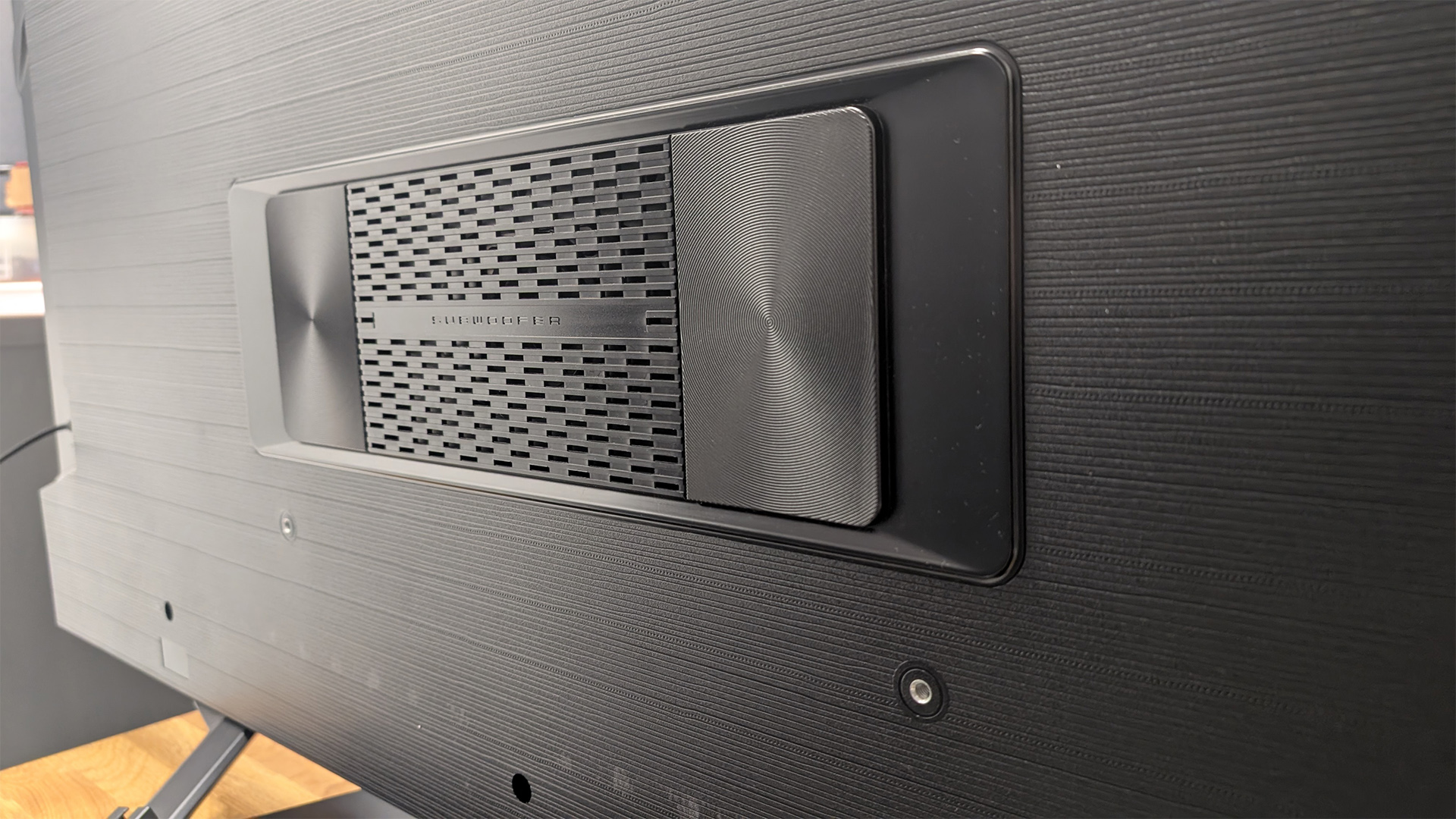
The Hisense U7N comes loaded with a 40W, 2.1-channel, Dolby Atmos and DTS Virtual:X-ready speaker system.
Audio is traditionally an area companies skimp on when designing cheaper TVs. This is why we were slightly surprised to find that the U7N sounds pretty decent.
Running our standard Blade Runner 2049 stress test, though the sound doesn’t come close to matching what you’ll get on a moderately capable soundbar, Hisense has got a lot right with the U7N.
During the second scene as K flies over the futuristic cityscape, while the TV can’t deliver the low-end heft required to do the booming synth soundtrack true justice, the audio remains controlled and the speakers never try to overreach. Though the sound lacks heft, distortion and sibilance never creep in.
Moving to an apartment scene in which K converses with a hologram moving around the room, voices remain nicely detached from background noise, making it easy to follow what is being said.
The only issue is that the sound is very contained. There’s no sense of directionality with everything firmly coming from the TV’s centre. Running a scene from Top Gun: Maverick there’s no sense of height as a fighter jet screams overhead and the rumbling engine and wind noise stays strictly locked in place, rather than following the plane’s movements as it should.
Verdict
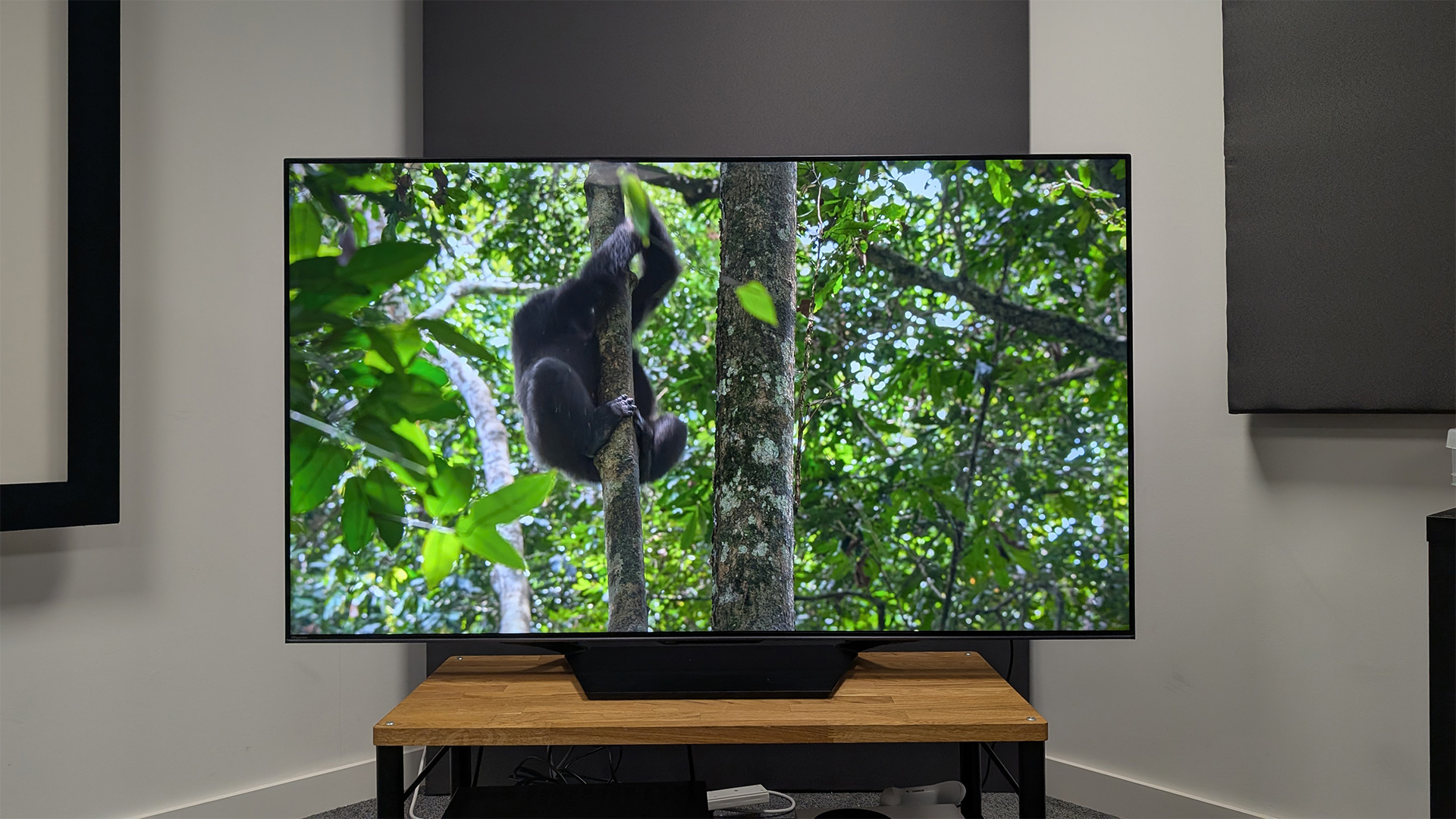
The Hisense U7N is a very good value Mini LED TV that will tick all the right boxes for most people. The Mini LED set offers solid picture quality in most instances – as long as you take the time to tweak its settings. Though its blacks aren’t perfect, its solid dimming zone control lets it throw up a nicely three-dimensional, solid-looking picture that is one of the best you’ll find on a set at this price. However, it can struggle with very bright scenes, where it has a tendency to push too hard and flatten sections of the picture. That is why it falls just short of earning a perfect five-star recommendation.
SCORES
- Picture 4
- Sound 4
- Features 4
MORE:
Read our Hisense U8N review
Also consider the TCL 805K
Read our review of the Panasonic W90A
Best TVs: flagship OLEDs and affordable flatscreens tried and tested

Alastair is What Hi-Fi?’s editor in chief. He has well over a decade’s experience as a journalist working in both B2C and B2B press. During this time he’s covered everything from the launch of the first Amazon Echo to government cyber security policy. Prior to joining What Hi-Fi? he served as Trusted Reviews’ editor-in-chief. Outside of tech, he has a Masters from King’s College London in Ethics and the Philosophy of Religion, is an enthusiastic, but untalented, guitar player and runs a webcomic in his spare time.
